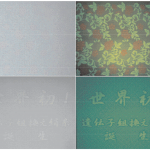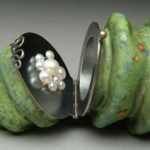cocoon
Silk is an amazing biomaterial, cultivated and prized for more than 5,000 years. The silk threads that we weave into our shiny fabrics are actually enormous protein crystals produced by insects. This industrial silk that you can buy at the mall is made by silkworms, which use the silk to form the cocoon that protects them as they transform into moths. Many other species of insect also produce silk proteins to protect themselves or their eggs, get around, or catch their prey, but none in such enormous quantity in such easy to harvest packages as the silkworm. Silks from different species are…
My silkworms are starting to turn into silkmoths! The first moth emerged from his cocoon this weekend, I hope more are close behind so that he can mate before he dies! I didn't expect him to come out so soon so I didn't have my real camera but I wanted to share my blurry phone pictures of the event:
In industrial silk production they can't use the cocoon that gets left behind because the moth uses an enzyme called cocoonase to chew his way out, breaking the otherwise continuous silk thread. I'm starting to explore ways that I can use this silk though--so far I've only made friendship…
Silks are incredible protein fibers produced by many different species of insects. Besides their use in making versatile textiles, silks are currently used in many different medical and engineering applications, from sutures to tissue engineering scaffolds to flexible electrode brain implants. Since I love fabrics and I'm interested in what biological engineers can do with biomaterials, I recently started working on a fun side project to raise and engineer silkworms, the animals used in industrial silk production around the world. We're having a lot of fun learning about silk and how to raise…
Evolve
Electroformed Copper, Vitreous Enamel, Sterling, Pearls, Lens, Feathers, Steel, Worm
Photo: Courtney Frisse
Last week I featured electroformed copper pendants by Kristina Glick Shank. I also found another outstanding electroformed copper artwork, this one by Kristin Mitsu Shiga. I think it's a wonderful idea to portray a chrysalid, the very symbol of transience, in metal - one of the most permanent materials possible. I am sorry it's titled Evolve - I don't love it when the concept of evolution is conflated with the concept of individual development. But this piece is so interesting…

